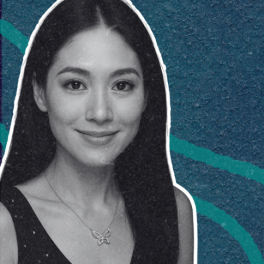
“I am longing to discover things I hadn’t even thought about”
A creative person is someone who steps outside of the norm. This could be encouraged by external factors: the drive to solve a problem or the desire to bring an idea into existence. They are people who aren’t satisfied with what currently exists—they constantly want to innovate and discover. They find solutions to problems by finding a way to materialize ideas that would otherwise seem absurd. To be creative is to constantly question and challenge the current reality.
It’s incredible how that statement intersects various different disciplines. Whether a lover of the beauty that one can create or a lover of the discoveries one can make–each half is in search of the wonder that life could bring.
The quote at the beginning, in particular, was spoken by a professional I was able to see featured in the documentary series “Abstract: The Art of Design”—Danish architect Bjarke Ingles. I decided to watch his episode because what can be done with architecture has always interested me. And with it, I had come to realize that it is an industry that is one perfect example of the beauty of marrying art with science.
This, as a matter of fact, is quoted in the documentary: “it [Architecture] is the art & science of creating the framework of our lives”. Architecture is a prime example of using science (engineering) to make something beautiful, and I immensely admire those who practice it.
For Ingles specifically, the leaps he has made in the field of architecture are admirable because not only did he create unique/aesthetically pleasing blueprints, but he also made sure that he was making them with a purpose. He uses the terms hedonistic sustainability and pragmatic utopia to maintain the fact that he can make ‘useful’ and ‘efficient’ designs remain beautiful.
“If everyone followed the rules, Copenhagen wouldn’t look like Copenhagen.”
This is something Bjarke Ingles said in the documentary that stuck with me. To put the quote into context, he stated that the things that Copenhagen citizens find the most definitive about their city are the structures that stand out—the structures that go against what was traditional. When asked about what he felt about those who were critical and skeptical about him, he mentioned the above quote. Ingles isn’t afraid to step out of everyone’s comfort zone when he knows he can deliver something even better when he pushes the boundaries.
His creations were unique and innovative because he went against the traditional or the ‘easy’. He was discovering new possibilities in a field where, in his words, there was almost zero innovation. Ingles tried his best to give his clients everything that they wanted, even if the ideas seemed impossible to put together—it was his creativity that allowed him to see how to make it happen. He said that what he was doing was forcing seemingly mutually exclusive ideas together to form a hybrid.
And yet, all of it wouldn’t have been possible without science – without creating designs that made these ambitious ideas achievable and structurally sound. Bjarke’s understanding of the science behind his creativity allowed him to bring these ideas to real life.
To quote Ingles a final time, "to make everybody happy is to make something really extraordinary". Throughout his career, he has made design decisions based on making the most out of the wishes of his clients. By making no compromises, he was forced to think past what already exists, cranking out multiple absurd ideas until one of them satisfied everyone, including himself. With all his designs, he looks at a different perspective when trying to solve his problems.
There is art in science and science in art. You need to be versed in certain facts of the natural world to have the confidence to make ideas come to life, and you need to be brave enough to go against the norm to discover new facts. Bjarke Ingles is one key example that highlights that these two disciplines are not, in fact, against each other. They are not two opposite ends of a spectrum. They go hand in hand. We should all be unafraid of becoming multidimensional, or multi-disciplinary–because, as Ingles has shown, we can transform life as we know it that way.
Support Young Creators Like This One!
VoiceBox is a platform built to help young creators thrive. We believe that sharing thoughtful, high-quality content deserves pay even if your audience isn’t 100,000 strong.
But here's the thing: while you enjoy free content, our young contributors from all over the world are fairly compensated for their work. To keep this up, we need your help.
Will you join our community of supporters?
Your donation, no matter the size, makes a real difference. It allows us to:
- Compensate young creators for their work
- Maintain a safe, ad-free environment
- Continue providing high-quality, free content, including research reports and insights into youth issues
- Highlight youth voices and unique perspectives from cultures around the world
Your generosity fuels our mission! By supporting VoiceBox, you are directly supporting young people and showing that you value what they have to say.





